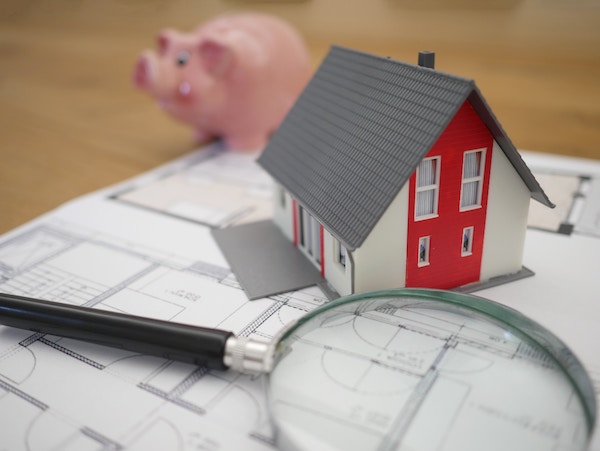Taking inventory of the U.S. real estate market

Taking inventory of the U.S. real estate market
September 28, 2023 | Dean Sevin Yeltekin
Real estate is responsible for one quarter of the world’s wealth, but it is studied in far less depth than other asset classes.
Alex Priest is dedicated to filling in the gaps, particularly in the area of real estate. Since he joined our faculty this summer, he has launched several exciting projects at the intersection of real estate, corporate finance, and asset pricing.
In the Q&A below, he introduces us to his research and provides a high-level view of trends in the commercial and residential real estate markets.
What inspired you to begin researching real estate markets?
Due to a lack of high-quality data, real estate has been less studied than other assets such as equities and bonds. For this reason, there is so much we don’t know, particularly when it comes to the role of financing in influencing different outcomes. Real estate is an interesting field of study because of its high level of heterogeneity. No two houses, office buildings or hotels are exactly the same. Even in a subdivision where the houses are similar in size and age, a house on a corner lot may be have a different value than a house on an interior lot next door. These subtle differences make real estate a challenging, but compelling area of study.
What is the focus of your current research?
I recently co-authored a paper (“Is COVID revealing a Virus in CMBS 2.0”) that links originator income overstatement with pre- and post-COVID-period loan distress. We looked at nearly 40,000 commercial mortgage-backed securities (CMBS) loans that were underwritten from 2013-2019 and found a tremendous amount of variation in the quality of loan underwriting. For any prospective buyer, the most important thing to know about a commercial property is how much net income they can expect for the next year. Given the extent to which lenders are regulated, thanks to Dodd-Frank and other legislation that has come about since the last financial crisis, we would expect lender underwriting to provide a conservative estimate of net income. What we actually found was that in the years leading up to COVID, a sizable proportion of loans (28% in our sample) overstated net income by 5% or more. This number is far larger for some originators. When COVID hit, loans that were the most aggressively underwritten performed the worst. Low quality underwriting often “blends in” during ordinary times, but true asset quality is revealed during times of distress. Our research suggests that the additional hidden risk presented by bad underwriting was not priced by external investors.
What does this research indicate about the overall soundness of CMBS?
After the last financial crisis, a common narrative that emerged was that CMBS are a much more transparent, higher-quality product because of tighter financial regulations. This is apparent in that many structured finance products self-refer to post-crisis issues as the “2.0” era. In particular, one of the regulations that garnered the most attention is the risk retention rule, which requires deal sponsors to retain 5% of the product in a deal. This is intended to incentivize deal sponsors to sell better products. What a lot of people don’t realize is that CMBS got a special carve-out from this rule in which the risk retention piece was allowed to be sold to outside investors. Even with Dodd-Frank in place, there still seem to be exceptions and loopholes that weaken structured financial products like CMBS. In total, maybe we didn’t learn our lesson from the last financial crisis.
What happened to the commercial real estate market during COVID?
From 2012 to March of 2020, the commercial real estate market was climbing at a steady rate of 4-5% per year. It took an overall dive of 10% when COVID hit. Prices rebounded before falling again as interest rates climbed. Now, they are around where they started prior to COVID for most property types. Commercial properties are often financed using fixed-rate terms for relatively long maturities, such as 10 years, so they may not feel the immediate effect of higher interest rates. But as buildings are refinanced, having to pay a much higher debt service on an asset is pushing down investor returns, and thus demand.
How did the residential real estate market differ from the commercial market?
Like the commercial real estate market, the residential market clipped along at a rate of 4-5% per year in many metropolitan areas from 2012 to 2010. From January 2012 to March 2020, there was a total increase in home price of about 58%, depending on which home price index you use. Then, from March 2020 to July 2022, average home prices increased an additional 40%. The spike was the result of a perfect storm of events—the rise in people working from home and desiring more space, widespread undersupply and underbuilding, stimulus checks, shortages of building materials, and a low-interest rate environment all contributed.
One thing that may be surprising is that a changing interest rate environment has not had a larger effect on housing prices. Two years ago, in December 2021, interest rates on a 30-year mortgage were in the ballpark of 2.7%. Now they are greater than 7%. We would typically see an inverse relationship between higher interest rates and home prices, but the median home price has stayed flat since July 2022—in large part because housing supply remains low. People are delaying moves because of higher interest rates, and fewer houses are hitting the market. Those who borrowed at low rates in the past are hesitating to list their homes due to the fact that they have “locked-in” such a low rate (and payment). You can divide homeowners into two major groups—those who borrowed at an interest rate of over 5% on their mortgage loan and those who borrowed at a rate under 5%. The group that pays over 5% is about twice as likely to consider moving in the next three years as the other group.
What are some broader implications of the recent increase in home prices?
The underlying price of housing has increased dramatically, well over 100%, since 2012 while interest rates have increased. For the students I teach, one immediate implication is that it is significantly more expensive to purchase a home than it was five or ten years ago. At the same time, though, people who have owned homes for at least five or ten years have built up a tremendous amount of equity.
What are some future research directions that you plan to explore?
I’m particularly interested in how society allocates resources to deal with the problem of stranded assets. While some employers are requiring their employees to return to the office, remote work is still far more prevalent than it was before the pandemic. As a result, office buildings are sitting empty and driving significant declines in value. In San Francisco, for example, office vacancy rates are at about 31%. It’s hard to adjust supply downward in response to lower demand because once a building is built, it’s built. You can convert or tear it down but at considerable expense. It’s unclear to me how these conversions or teardowns can offer a viable solution to the problem.
I’m also exploring the risk and return characteristics of commercial property and how this may differ from what we know about risk on other assets, like stocks and bonds. If you look at some heuristics that institutional investors often use for classifying risk in commercial real estate, they don’t seem to be closely correlated with measured risk using actual data. I plan to dig deeper into how investors manage risk.

Alex Priest is an assistant professor of finance at Simon Business School.
Follow the Dean’s Corner blog for more expert commentary on timely topics in business, economics, policy, and management education. To view other blogs in this series, visit the Dean's Corner Main Page.











